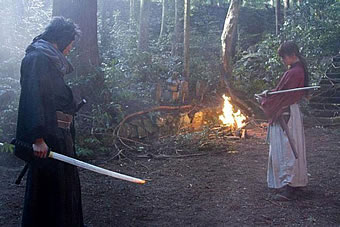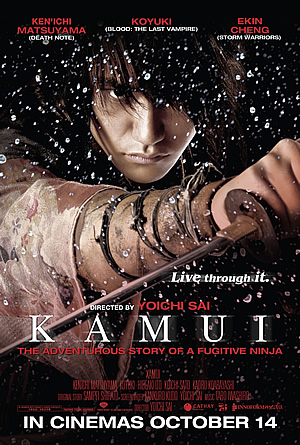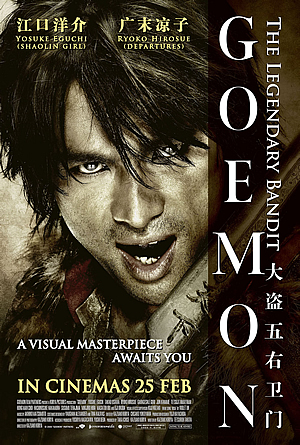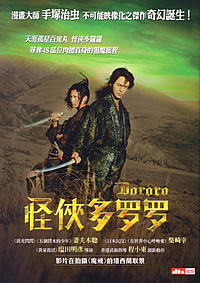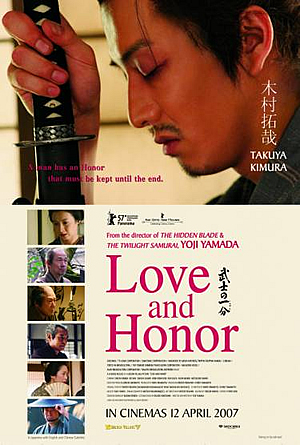RUROUNI KENSHIN (2012)
Genre: Action
Director: Keishi Ōtomo
Cast: Takeru Satoh, Emi Takei, Yu Aoi, Go Ayano, Taketo Tanaka, Munetaka Aoki, Genki Sudo, Eiji Okuda, Koji Kikkawa, Yosuke Eguchi
RunTime: 2 hrs 14 mins
Rating: NC-16 (Some Violence)
Released By: Encore Films and Filmgarde
Official Website: http://www.encorefilms.com/kenshin
Opening Day: 29 November 2012
Synopsis: Nearly 140 years ago, in the last days of the Shoguns, there was a man known as “Battosai the Killer,” feared as the most powerful assassin. He was faster than a god, stronger than a demon, and had a leading spirit of the Meiji Restoration. In a flash he downs any number of opponents. Once he pulled out his sword, nobody survived against him. As the war ended and the new Meiji era came, Battosai vanished from the world. The only thing that remained was his legend. 10 years later, a man appeared in a world still in disarray. His name is Kenshin Himura, a wanderer who saves people with a back-blade sword that cannot kill. This is Battosai the Killer, who has taken a pledge never to kill again. In order to bring peace to the world so that his loved ones can live safely, Now Kenshin’s battle begins!
Movie Review:
Relying on the familiar narrative of a warrior who tries to shed his violent past in pursuit of a peaceful existence, this live-action adaptation of the highly popular manga and anime series (sometimes known as ‘Samurai X’) based on the well-known Civil War hero Himura Kenshin makes one wonder why there aren’t more of such films coming out of Japan. To say it is good is an understatement, because director Keishi Otomo’s film really is a rip-roaringly entertaining samurai movie that packs a riveting punch.
We’d have to admit that we aren’t acquainted with Nobuhiro Watsuki's original shonen manga nor the anime series that followed, so we won’t be able to inform fans of the former or the latter if this adaptation stays close to its source material. From what we have gathered though, Otomo – who co-wrote the screenplay with Kiyomi Fujii – has taken from the first two story arcs of the series, namely Kenshin’s vendetta with an opium dealer during the early years of the Meiji Restoration as well as his harrowing past during the Civil War that led to the cross-shaped scar on his face.
When we are first introduced to Kenshin, it is already the deciding battle of the revolution - the battle of Toba-Fushima in 1868 – and amid stark sobering scenes of bloodshed and death, Kenshin, better known as the fearsome ‘Battosai the Killer’, slices the last remaining cohorts of the Shogunate. As news spreads of the Emperor’s victory, Kenshin is content to ditch his sword for the solitary life of a wanderer – even as his fellow samurai, Jin'e (Koji Kikkawa), warns him that a samurai lives and dies by the blade.
Ten years later, Kenshin has pretty much managed to live his choice of seclusion, before running one day into Kaoru (Emi Takei). Kaoru runs the fencing school left to her by her father, a school whose name has however been vilified for being that of ‘Battosai’ widely believed to be responsible for a string of murders around Tokyo. A psychopathic warrior who manages to escape death from Kenshin’s blade in the battle has assumed the name of ‘Battosai’ and now goes about doing the bidding for the ruthless businessman Kanryu (Teruyuki Kagawa).
Rapacious for power, Kanryu amasses his own private army of ex-samurai, most of them he wills into his service by getting them hooked on a special brand of opium he develops with reluctant pharmacist Megumi (Yu Aoi). Kenshin is forced to revisit his deadly ways when Kaoru, whom he develops an affection to, is threatened first by a sudden run-in with Battosai and later on when Megumi seeks refuge from Kanryu’s men at the dojo. The only difference? Kenshin now fights with a ‘reverse sword’, or simply one with the sharp edge reversed.
Truth is, you can pretty much guess where the story is headed, but what makes the movie so enjoyable is the exhilarating fight choreography from action director Kenji Tanigaki. Indeed, the best parts are when we see Kenshin wielding his sword against numerous other opponents, even without the benefit of a lethal blade. Tanigaki ensures that the action is never repetitive, and each sequence boasts its own balletic rhythm to keep you engrossed. Unlike some wuxia films, Tanigaki also opts for a realistic style even with the requisite wirework, offering his audience the spectacle of fluid and furious swordplay without the exaggerated embellishments.
In between the clashing of swords, Otomo stages confidently the bond that develops between Kenshin and Kaoru. Rather than conforming their relationship to some formulaic romance, both characters are allowed to play out a more complex relationship that is entwined with Kenshin’s own demons from the past. And in that regard, it is fortunate that both Sato and Takei are better actors than to resort to the melodramatic trappings of TV romances where both hail from, with both performers also sharing a graceful chemistry with each other.
That they are able to deliver such nuanced performances is also to Otomo’s credit, who directs the movie with an assured hand. Rather than the slapstick humour we are told is part and parcel of Kenshin’s character in the manga, Otomo opts for a more down to earth portrayal, so even the light heartedness is never overplayed. Similarly, Otomo drops the exposition on the various schools and techniques of kenjitsu, and keeps to having some other character name the cool-sounding move that Kenshin executes whenever it is expedient.
It is inevitable given its origins that fans of the manga and anime will bring their expectations to bear on this live-action version. Nonetheless, in going for a more true-to-life feel, this adaptation is, in our opinion, all the better for it. It’s not one of those Yoji Yamada samurai movies, nor is it anywhere close to Takashi Miike’s ’13 Assassins’, but this is solid blockbuster entertainment with universal themes of pacifism, vengeance and love packed with a distinct Nippon flavour.
Movie Rating:




(Opting for a more down-to-earth feel than the original manga or the anime, this live-action adaptation is as cool and exciting as samurai movies get)
Review by Gabriel Chong
You might also like:
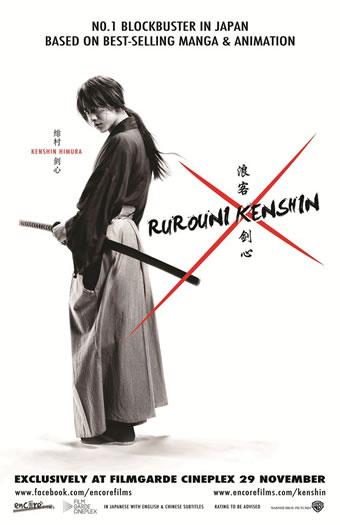
Movie Stills
